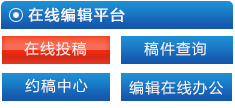应用研究
观察儿童保健中开展早期综合发展指导对小儿发育的影响
陈禹含
【摘要】 【摘要】目的 研究分析在开展儿童保健工作中早期综合发展指导工作的重要意义和具体应用方法。方法 选取2018年1月至2019年7月新出生婴儿150例,应用计算机随机分组法将所选婴儿随机分为两组,并接受不同的儿童保健方案。对照组婴儿采用常规儿童保健,不进行早期综合发展指导,观察组婴儿在常规儿童保健方式基础上加入实施早期综合发展指导。
【关键字】 儿童保健,早期综合发展指导,新生儿,发育,体格,智力,婴幼儿常见病
中图分类号:文献标识码:文章编号:
[Abstract]Objective To study and analyze the significance and application of early comprehensive development guidance in child health care work. Methods 150 new-born infants from January 2018 to July 2019 were randomly divided into two groups and received different child care programs. The infants in the Control Group were given routine child care without early comprehensive development guidance, and the infants in the observation group were given early comprehensive development guidance on the basis of routine child care. The physical and mental development of the two groups of children at 1 year old were compared and analyzed. Results The Height, weight and head circumference of the children in the observation group were significantly better than those in the control group (P<0.05). At the age of 1 year, the scores of language, movement, Social Intercourse, fine movement and adaptability in the observation group were significantly higher than those in the control group (P<0.05) . The incidence of related common diseases in the observation group was significantly lower than that in the control group (P<0.05) . Conclusion The early Comprehensive Development Guidance in routine child health care can promote the development of infants' physique and intelligence, and prevent the occurrence of various common diseases of infants.
我国是一个人口大国,每年大约有2000万新生儿出生,为了让这些新生儿健康成长,我国已经在绝大多数地区推广实行免费儿童保健政策[1]。但我国儿童保健起步较晚,各地区都在不停探索如何有效提高儿童保健效果,确保婴幼儿能更好、更健康的发育[2]。对于新生儿何时开始实施儿童保健更加有效和适用,目前尚无明确结论。早期综合发展指导就是在新生儿出生后尽早进行关于儿童发育的综合性的干预指导措施,近年来在临床上得到广泛地推广[3]。为进一步了解早期综合发展指导在新生儿儿童保健中的意义和应用方法,本研究选取了近年新出生婴儿进行了随机对照研究,报道如下。
1 资料及方法
1.1 一般资料:选取2018年1月至2019年7月在我院出生的新生婴儿150例。所有参与本研究的婴儿均为足月健康婴儿,且其父母均对本研究知情同意。采用计算机随机分组法将所选婴儿随机分为观察组与对照组,两组患儿例数均为75例。观察组婴儿男35例,女40例;孕周为38~41周,平均(39.44±1.01)周;出生时体质量2.61~4.36 kg,平均(3.84±1.14)kg。对照组婴儿男36例,女39例;孕周为38~41周,平均(39.38±9.85)周;出生时体质量2.59~4.39 kg,平均(3.85±1.22)kg。两组患者一般资料无明显区别,有可比性(P>0.05)。
病例纳入标准:①本院产科出生的足月健康婴儿;②自愿参加本研究,并签署知情同意书;③父母依从性较好。病例排除标准:①婴儿有先天性身体发育缺陷或重要器官功能障碍;②婴儿本身或父母任一方明确有遗传性疾病;③合并有传染性疾病;④由于特殊原因无法正常参与儿童保健;⑤早产儿;⑥其他不宜参与早期综合发展指导婴儿。










